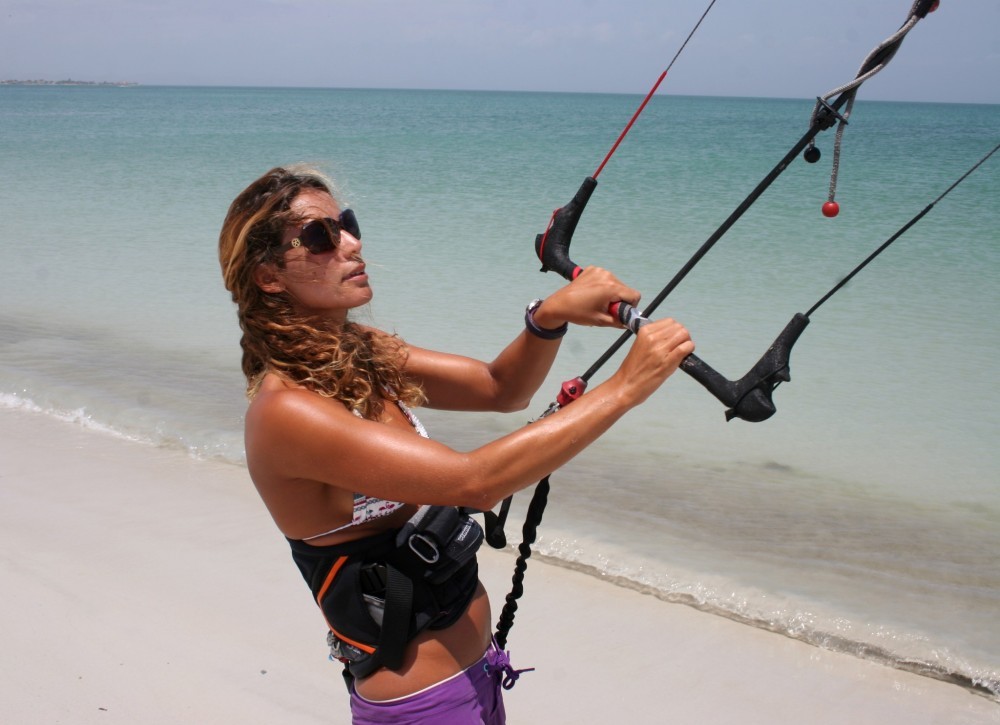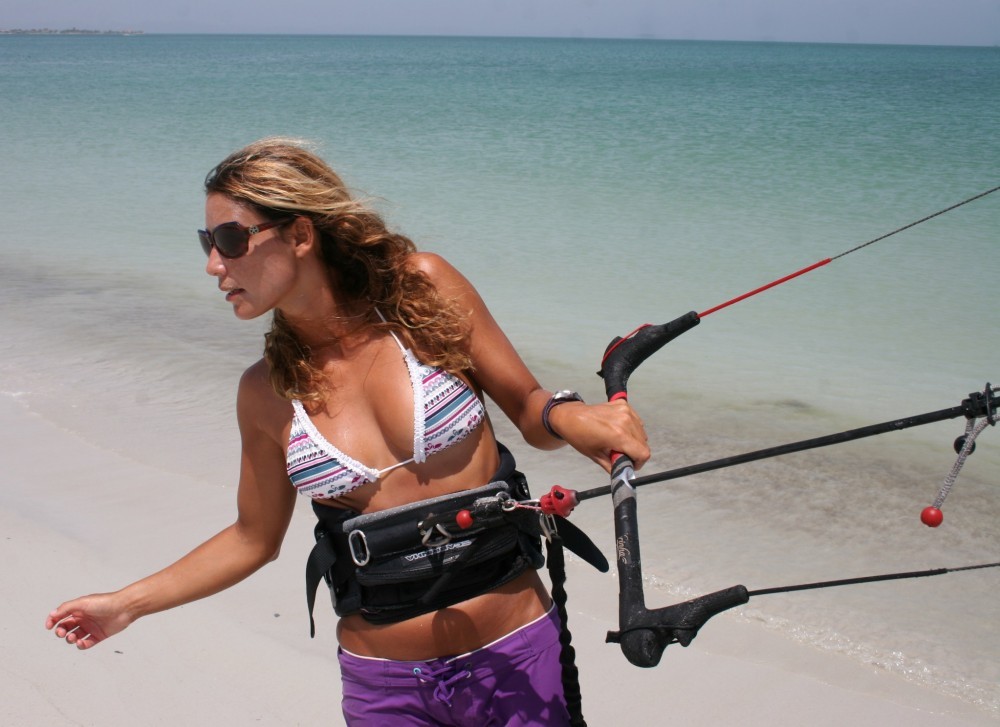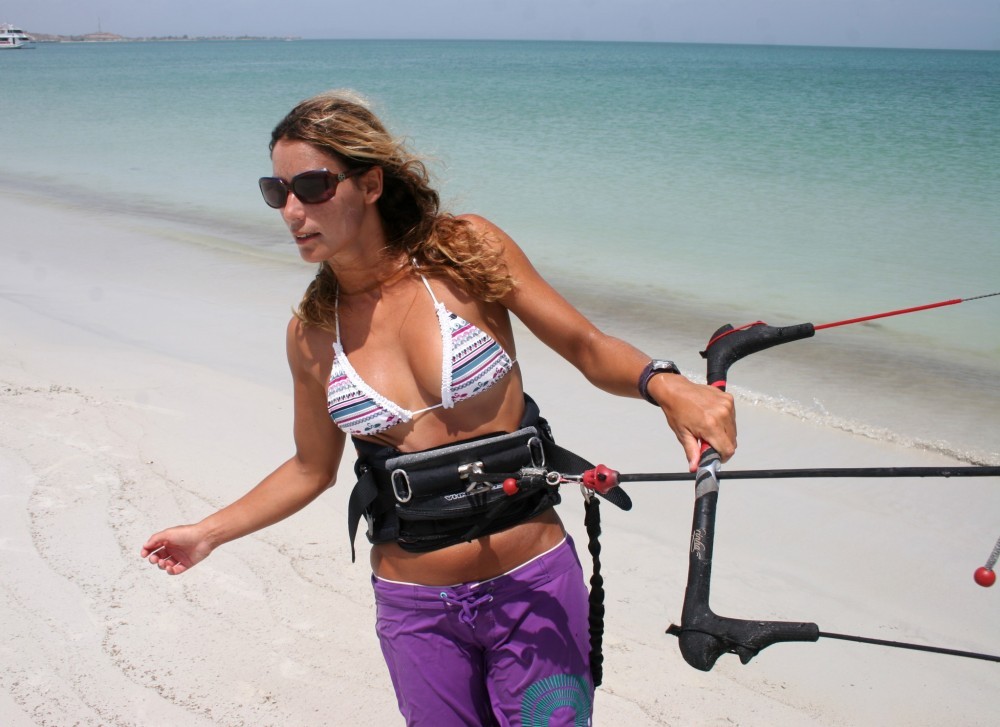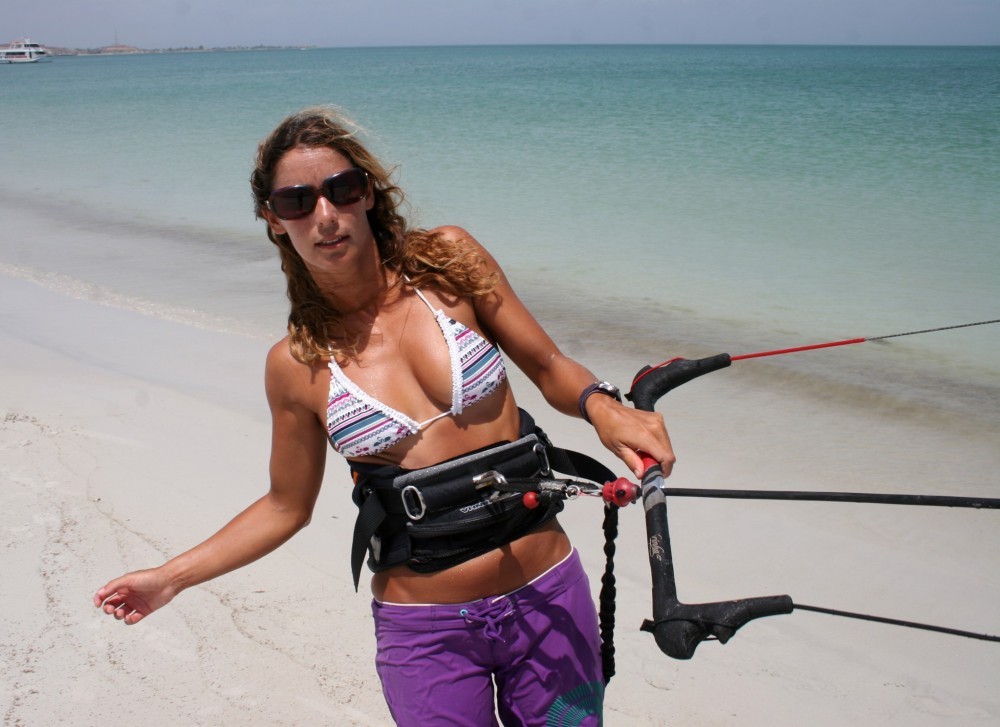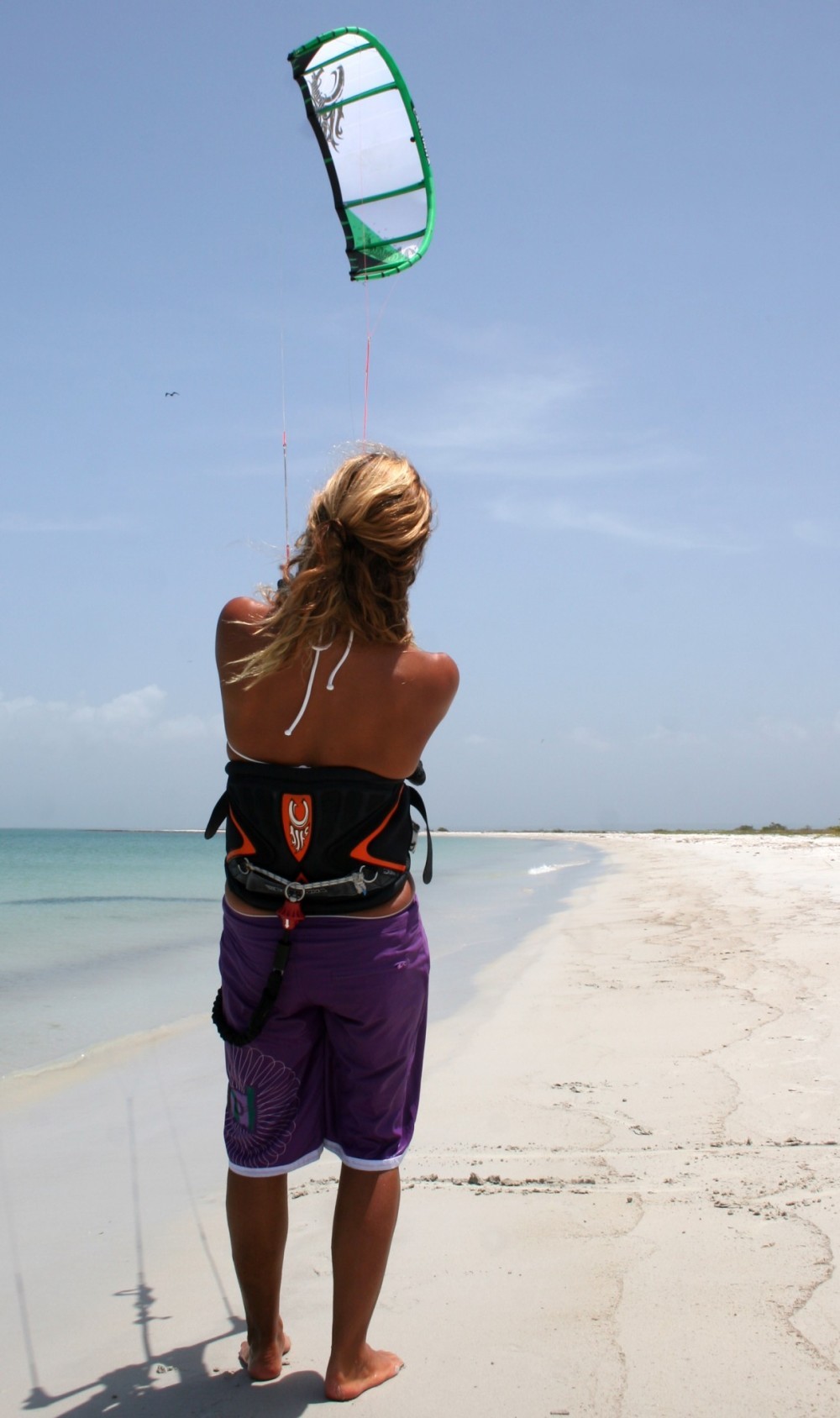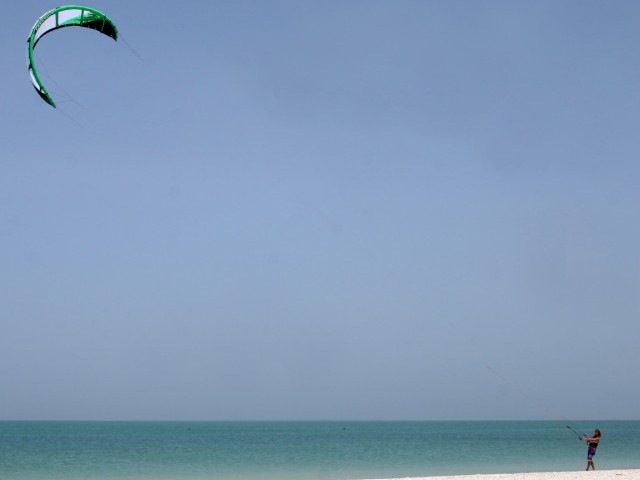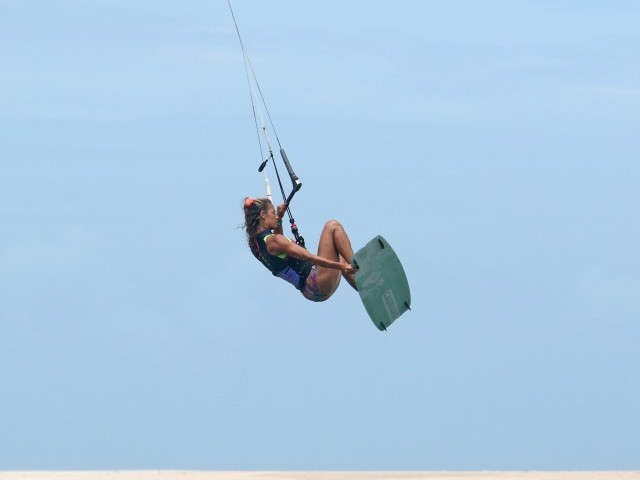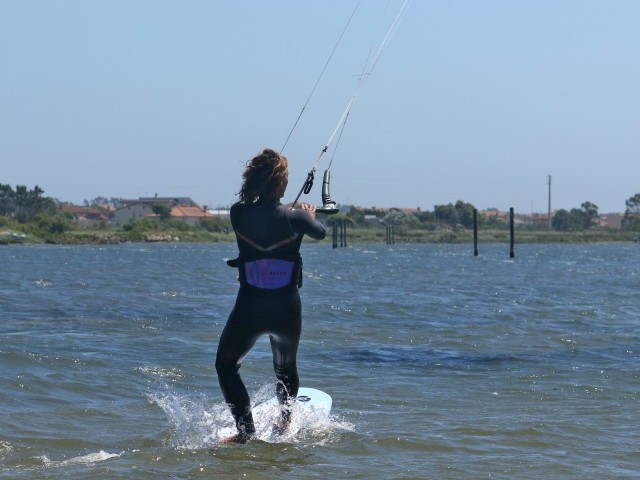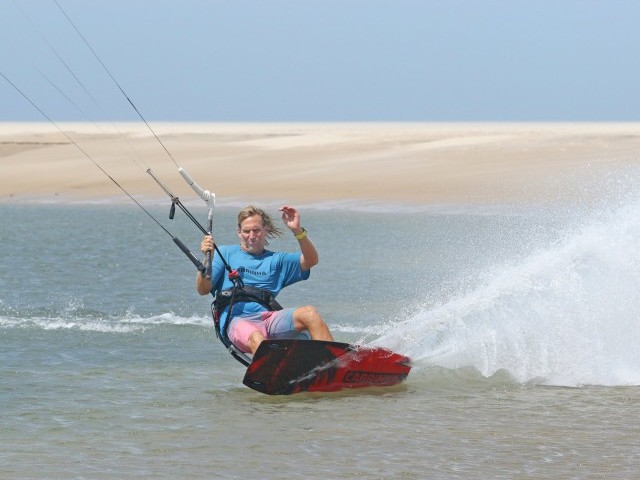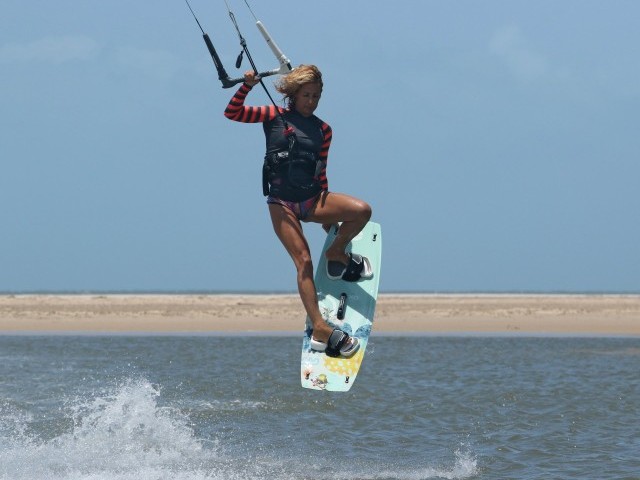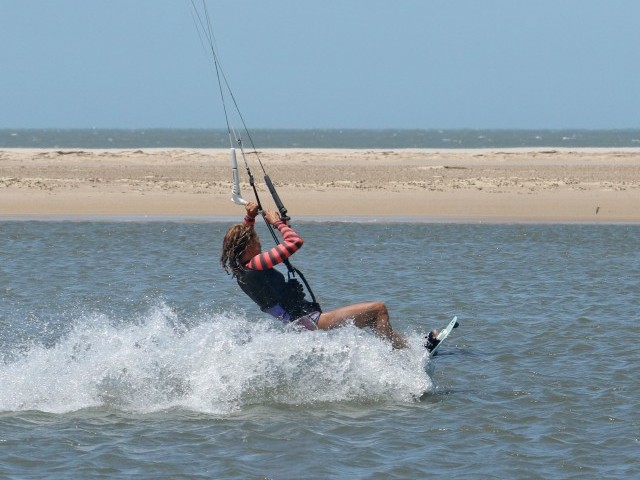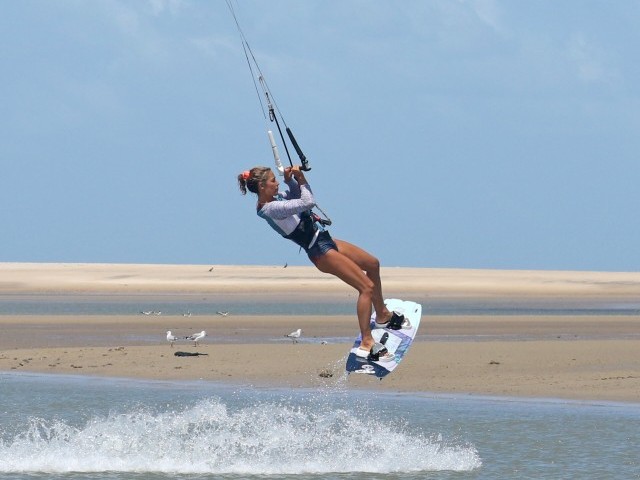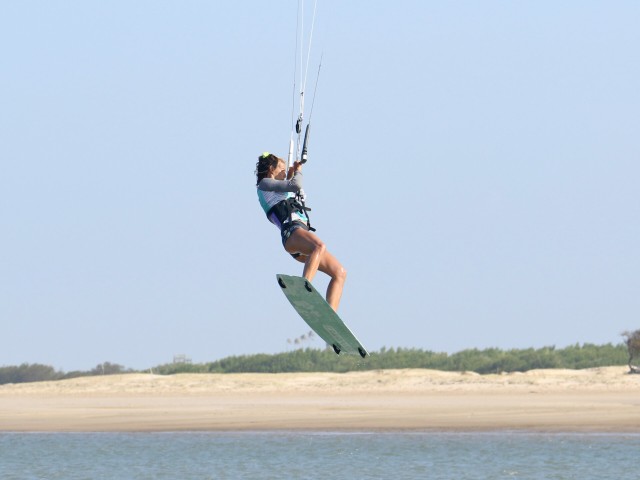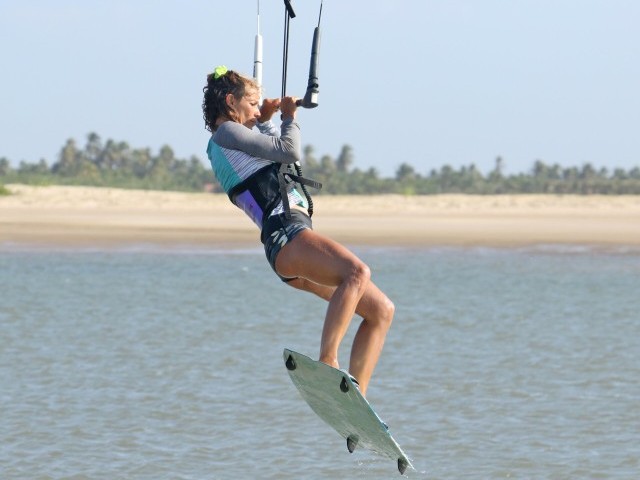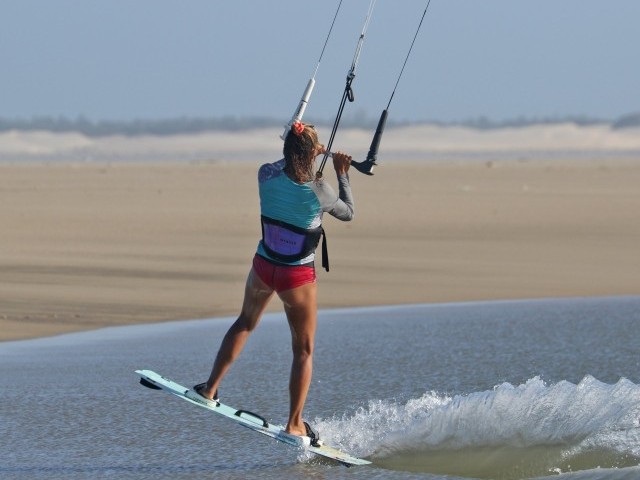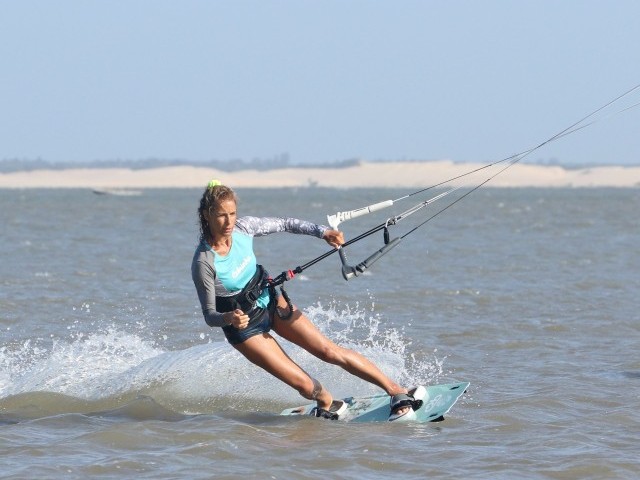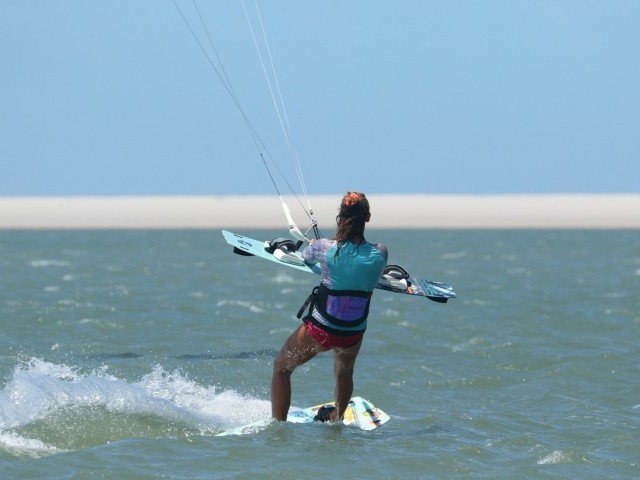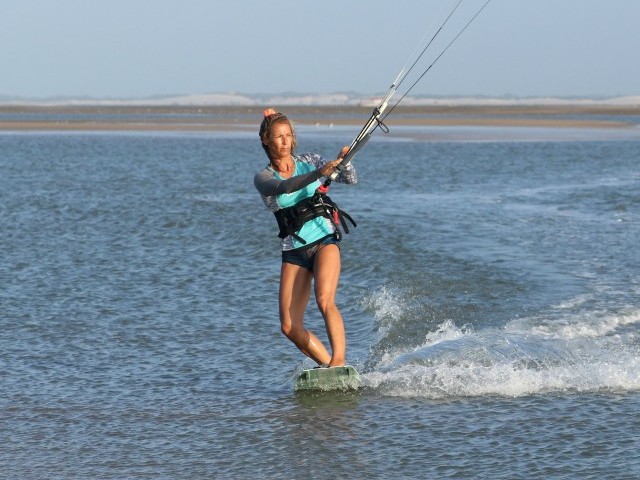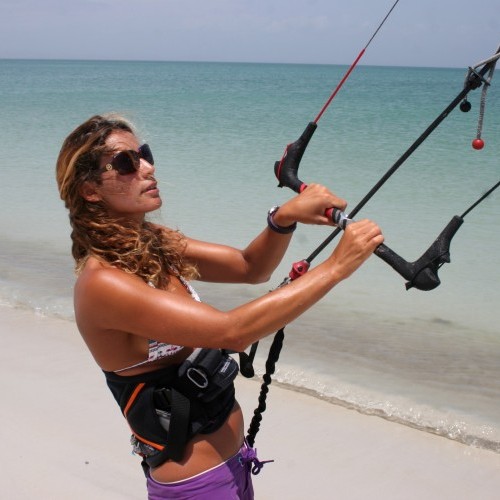
Walking With a Kite
Technique / Beginner
Introduction
This one is for anyone who has just had their first lessons, or had their lessons last year and may need a reminder on the best and safest method for walking around whilst attached to a flying kite. So whether you’re heading down to the coast or tripping off abroad being confident and safe on terra firma should see happily progressing in your kiting.
12 O’clock Shadow
If you look at Pic A. you can see Karine standing with her kite at 12 o’clock, right up above her. Often this seems like the easiest way to control your kite as you have two hands on the bar and the kite can move either way without you dropping it. Also if the wind is not too strong you can inch back upwind in a fairly straight line, walking backwards.
However for those few positives there are heaps of cons. Lets firstly consider the safety factor. With your kite at 12 o’clock should a strong gust or squall surprise you there is only one way you can go, and that is up. Once you’re airborne over land or shallow water you have two choices go where the kite takes you or release. If the wind is blowing onshore and you are lofted towards something hard, then going with the kite is not an option. However if you’re high over solid ground then releasing your safety is also not an option either, as you’ll just drop. In this scenario you are quite literally stuck between a rock and a hard place, neither option looks good!
If that’s not enough to make you consider another option then lets ponder carrying the board. With the board in one hand and the bar in another it is nigh on impossible to keep the kite at 12 whilst walking backwards, so you’ll need to keep dropping the board, swapping hands, general mincing in the shallows!
Finally as good citizens we should all be conscious of other water users, particularly our fellow kiters. If you are in your depth and wander around with your kite at 12 o’clock you are an obstacle. No other riding kiter can get past you unless they are sufficiently upwind. If a few people wander around with their kites above their heads a spot soon becomes full. Admittedly in an ideal world we should all give each other ample space but this is not always possible.
A Better Option
Pic B. demonstrates a far better alternative. With her kite somewhere between 10 and 11, or 1 and 2 Karine is much safer.
With her kite over to one side or another there is very little chance of Karine getting lofted up into the air. Any surprises and the worst that can happen is that she gets pulled onto one side or the other. Should this be the case she’ll have plenty of time to release the bar and pull/push her safety without travelling through the air. She may get sandy or muddy but she won’t get hurt!
As far as carrying a board goes, seeing as she’ll only have to control the kite on one side of the window, one hand will be plenty, and we’ll see how shortly.
Walking will also be considerably easier as Karine can turn and face upwind, and thus use her legs as nature intended.
And finally with her kite held at this angle should Karine be walking around in the shallows other kiters will still be able to pass, as she is not creating an obstruction. Smiles all around.
Remember How?
So a quick reminder of how to get yourself set up for a leisurely walk with your kite.
Pic 1. To start with Karine places both hands near the centre of the bar. And makes sure that the chicken loop and finger are in place. Then using both hands Karine steers her kite to the side that most favours the direction in which she wants to walk. Walking upwind means that you will be heading either to the right or left, so if you have far to go you’ll potentially need to zig zag, as you would to walk up a steep mountain. She keeps tension in the lines by keeping the bar in just enough so that she can still steer the kite.
Pic 2. Once she has the kite where she wants it, in this case at about 45˚, she takes her front hand off the bar and turns her head, shoulders and hips to face upwind. Karine keeps the bar pulled in to keep tension on the lines. As long as the wind is constant the kite should not move too much because her hand is in the centre of the bar. From this position Karine can start to walk. The more she twists her body the more directly into the wind she can walk.
Pic 3. As she walks the kite will no doubt have a mind of its own and start to move. Just by walking slightly into the wind Karine is actually generating more power in the kite and therefore it will react to any movement of the bar, deliberate or not. In this picture Karine felt the kite rising, which means that there must be more tension on the left hand side of the bar (the one she is holding). So to stop the kite rising Karine eases her hand away from her, tiny bit by tiny bit until she feels the kite drop slightly.
Pic 4. Karine let the bar out too much so now the kite is dropping back down. To stop the kite steering down Karine now pulls in on her hand, which puts tension back on the left of the bar, which in turns takes the kite back up. Genius
The best way to practice your one handed control is whilst standing still. Once you get a feel for where the kite is you will be able to feather the kite with short yet abrupt movements of your steering hand. Added to this if the wind is constant you can use your wrist to steer the kite as you would whilst body dragging upwind (see issue 11).
Talk Through
We’ve added some speech to the videos so have a butchers and a listen and try it next time you go down to the beach. Best of British.
This technique article was in Issue 21 of IKSURFMAG.
Related
By Christian and Karine
Christian and Karine have been working together as a coaching team, running improver to advanced kitesurfing clinics since 2003.







